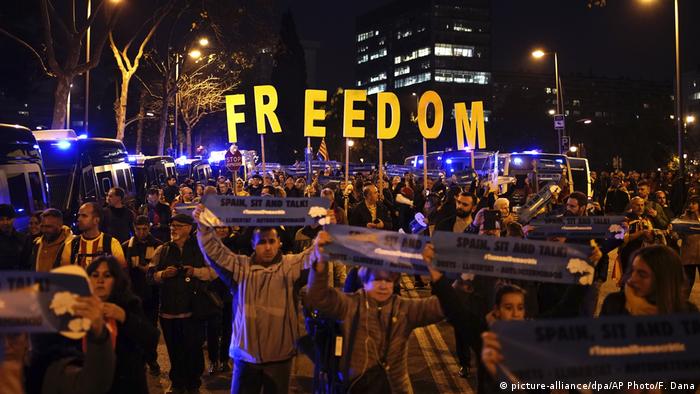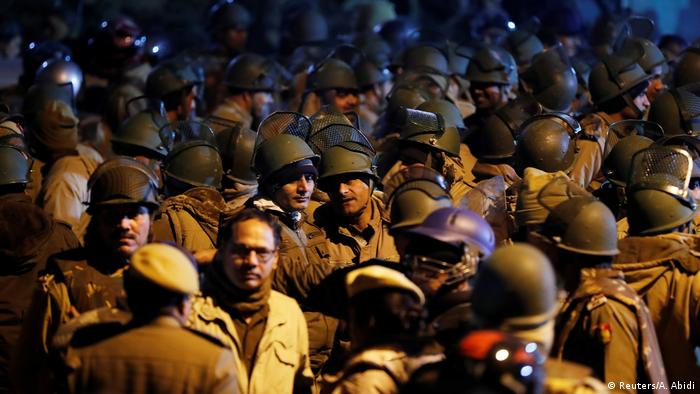Maple Leaf Foods boss attack on Trump pits ethics against shareholder value:
As stock falls, the 'shareholder primacy' rule argues McCain should have stayed mum
Don Pittis · CBC News · Posted: Jan 14, 2020
U.S. President Donald Trump delivers a statement on Iran's missile attacks on U.S.-led forces in Iraq. Maple Leaf Michael McCain traces the cause of the latest dispute, that led to the airline missile strike, back to the U.S. withdrawal from the international nuclear pact with Iran. (Jonathan Ernst/Reuters)
So when should a company CEO take a stance?
According to the business principle of shareholder primacy, there is an argument that Sunday's Twitter attack on U.S. President Donald Trump by the CEO of Maple Leaf Foods, Michael McCain, was dead wrong.
A lot of the debate over McCain's outspoken tweets revolves around the detail of what he said and where he assigned blame, a subject exhaustively addressed in the hashtag #BoycottMapleLeafFoods trending on Twitter Monday.
While the Canadian food company boss did not mention Trump by name, reference in his series of tweets to "a narcissist in Washington" seemed like a dead giveaway to most people. According to the Twitter response, even Trump fans recognized the description.
Blame Trump
Essentially the case McCain made in his angry attack was that by pulling out of the multi-country agreement that had forced Iran to stop its nuclear program, Trump had intentionally reopened a geopolitical wound the world had found a route to heal.
But McCain didn't stop there. The company boss drew a straight line from Trump's action in tossing out the international "path to contain" a "dangerous" Iran, to the latest round of tit-for-tat violence that led to the killing of a plane load of innocents, including the family of a Maple Leaf Foods employee.
Even more contentious was his implication that the latest U.S. attack on Iran was politically motivated, intended by the Trump administration to divert attention away from his "political woes," including a growing wave of evidence that Trump had colluded with Russia against the interests of the United States.
Shares tumble
While many, especially die-hard Trump supporters, will disagree with McCain's depiction of how events have unfolded, it is by no means crazy talk. The same contention has been widely reported in news stories and commentary easily found in various credible media outlets.
Maple Leaf Foods CEO takes aim at U.S. government over downing of PS752 by Iran How the U.S. got to the brink of war with IranBut quite apart from the CEO's political analysis of events, the question from the business point of view is whether, as the boss of a company owned by shareholders, he should have spoken out at all. The question was especially relevant as the share price fell on Monday, closing down about one per cent on the day.
As outlined by the conservative economist Milton Friedman in his 1962 book Capitalism and Freedom, the principle of shareholder primacy insists that "corporations have no higher purpose than maximizing profits for their shareholders."
According to that point of view, the purpose of a company is not to make the world a better place. At least not on purpose. The job of the capitalist is to do anything legal to make money, and as the representatives of those shareholders, corporate bosses have the same duty.
But with the growing power and influence of global corporations and the powerlessness of governments to step in and solve problems like gross inequality and climate change, the shareholder primacy principle seems to be slipping.
Just last summer a powerful group of 200 corporate stars, including Apple's Tim Cook, Amazon's Jeff Bezos, JPMorgan Chase's Jamie Dimon and Mary Barra of General Motors, announced they were withdrawing from that shareholder-only point of view.
Instead, the influential Business Roundtable announced the responsibility of member companies would also include "generating good jobs, a strong and sustainable economy, innovation, a healthy environment and economic opportunity for all."
CEO activism trend
As the Harvard Business Review has reported in the past, it's a trend that has been growing for about five years. Companies often align with the interests of their employees and customers and against government. When companies objected to state laws forcing workers to use washrooms that matched the gender on their birth certificates, North Carolina lost billions in new investment says the review.
Harking back to an earlier form of capitalism, sometimes scorned as paternalistic, these corporate leaders have expressed the view that they have a much wider form of accountability — to employees, to society, and in the case of climate change, to the entire planet.
To truly gigantic corporations that have more clout than many governments, the concept has a certain self-serving rationale. As a company becomes bigger and bigger, its interests begin to merge with the population as a whole.
ANALYSIS U.S. corporate leaders swing left to fix 'frayed' American dream: Don Pittis
ANALYSIS Stephen Poloz gets racier as his farewell tour progresses: Don PittisAs many in the tech world have noted, there is no point in having a wonderful product if the masses of consumers are too poor to buy it. And, while some companies profit from instability, history shows that war, revolution and displaced populations have often been bad for corporations.
In the current example, with this series of tweets, McCain showed Maple Leaf Foods workers that he was willing to stake his own and the company's reputation in support of one of their fellow employees. Although it appears McCain's comments were motivated by sincere grief and anger, not a cynical plot to increase productivity, it is well documented that workers who feel loyalty to their bosses help to build stronger businesses.
And as to the Boycott Maple Leaf Foods campaign, in a politically divided world, so far McCain's tweets also seem to be attracting many outspoken supporters who promise to buy more of the company's products.
Certainly McCain is not alone in expressing public alarm about the direction Trump is taking the United States and the world. Bank of Canada governor Stephen Poloz said something similar last week. Many U.S. business leaders, including Bloomberg's Michael Bloomberg and Amazon's Jeff Bezos, have not hurt their respective businesses by opposing the U.S. president.
Between motivated employees knowing McCain has their backs and the many buyers of Maple Leaf Foods products who are glad the company executive has taken what he saw as a moral stance in an immoral world, it is very possible shareholders will benefit in the longer term.
As the saying goes, the proof of the pudding — or in this case the prepared meats — will be in the eating.
Follow Don on Twitter @don_pittis






















